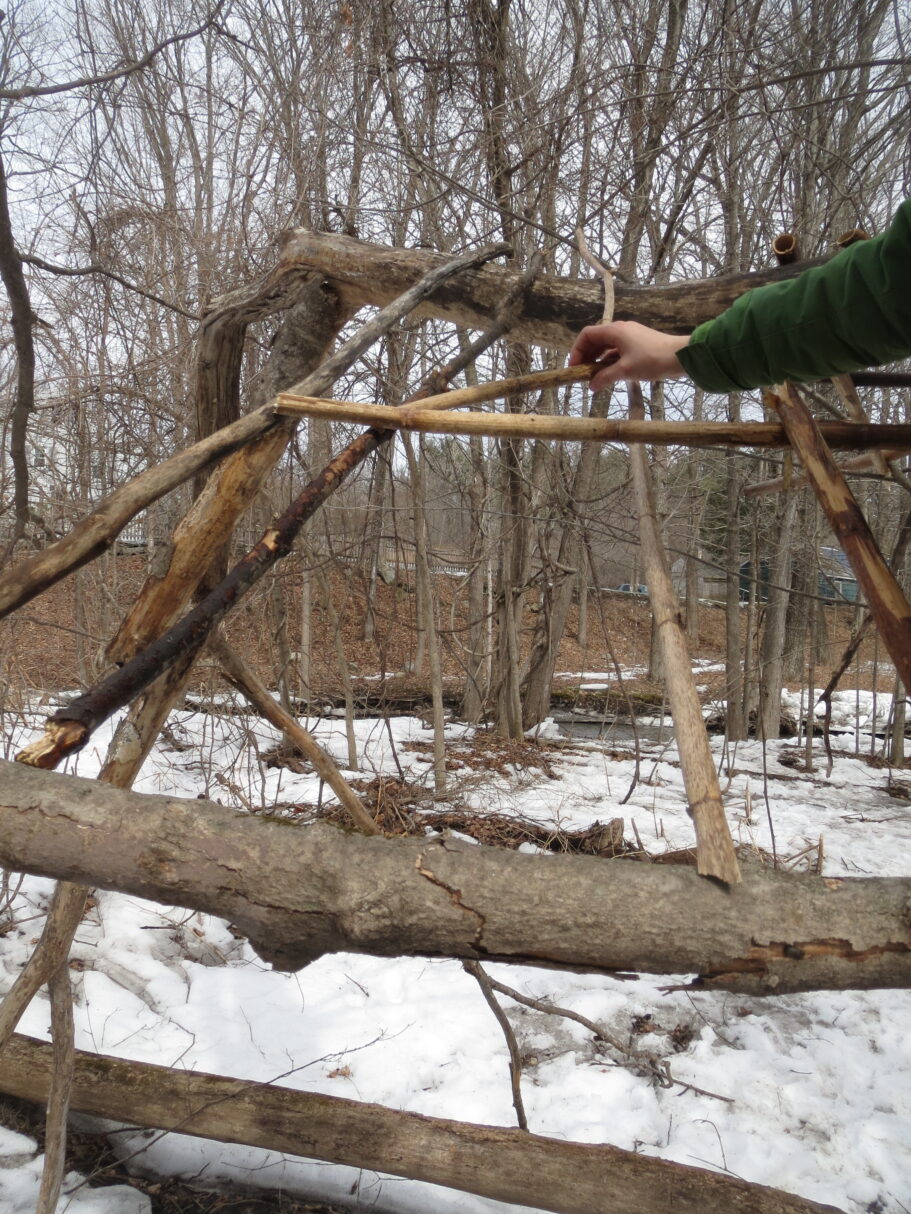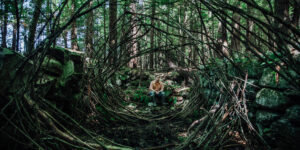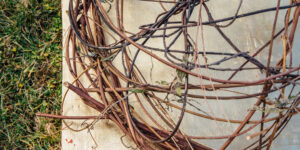A few months ago, I led a work shop on environmental art making with some middle schoolers from the local elementary school. We toured the site of the Flotsam weirs installation I completed last year, and talked about what art meant to each of us. I emphasized that the outcome of the time on site was not to produce something “finished” that could be graded, but something that engaged their process, where they could push themselves to learn as much about the materials they found through using it to make art, song or performance. Before we started we also talked about the ecology of the site, and the significance of the place in its historical context and I asked them to consider how what they were doing related to not only the site and the materials but their context in this place, with its history and ecological dynamics…..
For the next several hours, these students were immersed in their projects, hauling ice chunks, throwing mud, climbing trees, sawing branches & getting into the nitty-gritty of making things. There were numerous failures – spectacular ones – with crashing ice, splashing rock and tumbling tree limbs, and there were the successes of elegant ice sculptures, artfully arranged webs of reeds, mud paintings and slinging onto ice all critical to their understanding about process and materials and making something only to be able to let it go and not push it to “perfection.” Before we left, each team of artists or individual artists presented their project to the group and talked about what they were trying to say, or solve and the group responded with critiques and observations in thoughtful and constructive ways.
So many articles these days talk about nature deficit disorder, or how children are alienated from nature, but seeing and working with this group, I am convinced that it does not have to be this way, and in fact I’d argue that the majority of us are predisposed to want to make art and stuff outside and to try things and revel in the process, and in so doing discover our boundaries, tolerances and horizons. The best thing I heard on the way back to school from a student was….What a difference, where I saw all this as trash when we got here, now I see it as unlimited, free material for me to make stuff!
Thanks to these amazing students….














